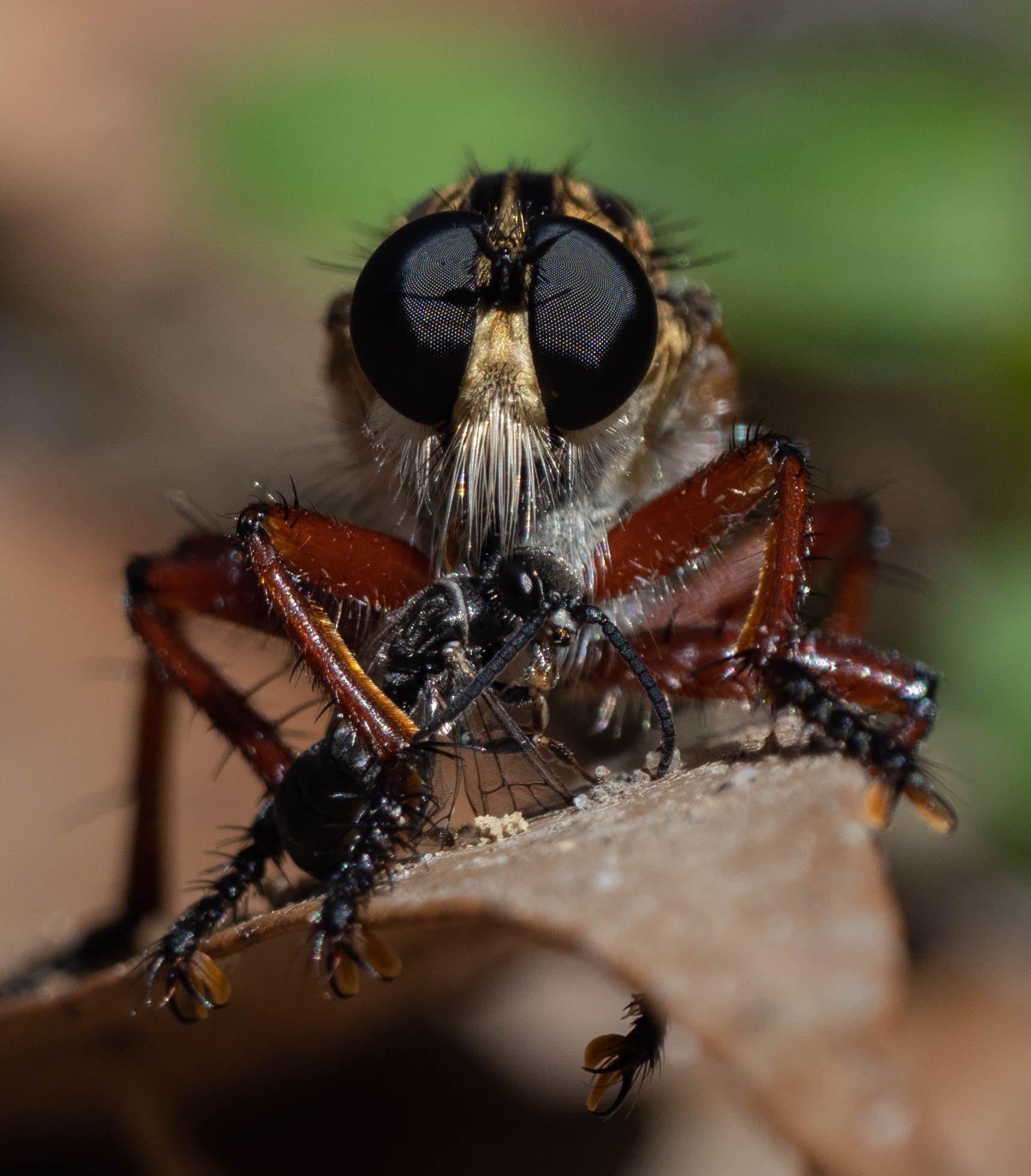
robber fly with flower wasp
Robber flies are accomplished aerial hunters, often taking well-defended prey. The fly has strategically impaled this flower wasp through the neck. Within seconds the prey had stopped moving completely.
Zosteria
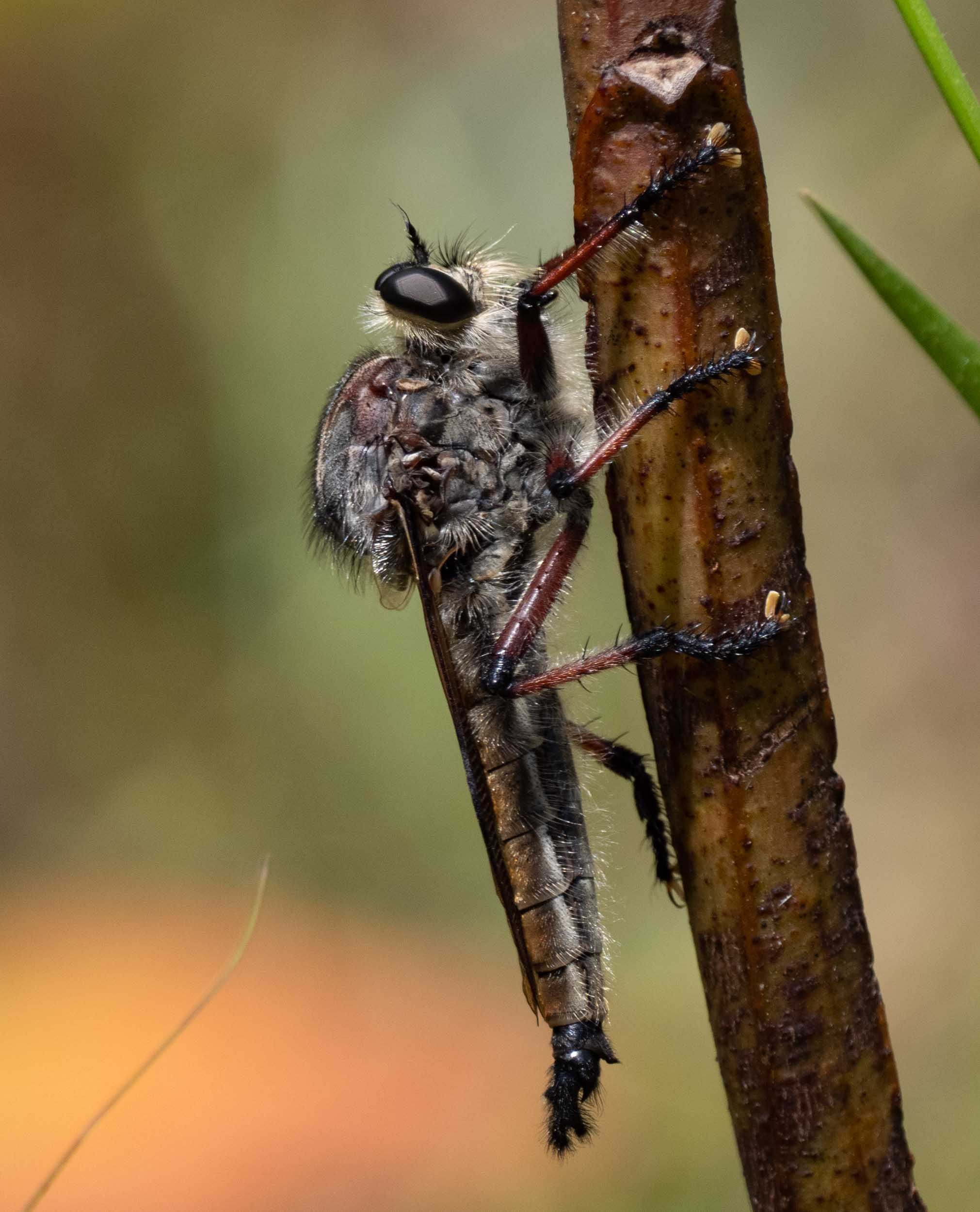
robber fly
Asilidae is one of the largest fly families. Australia has nearly 400 species of robber flies across 68 genera, most of them endemic.
Neoaratus hercules
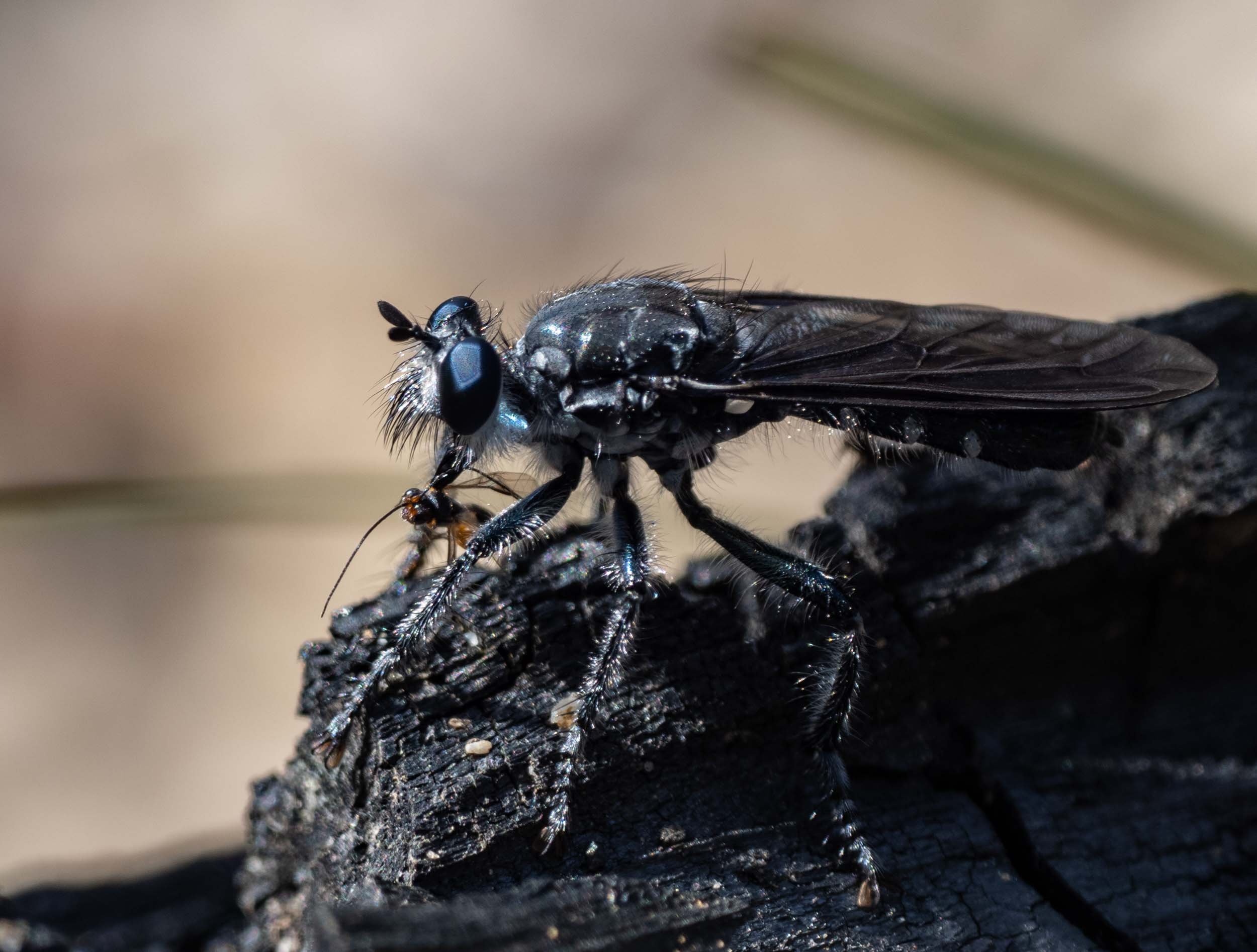
predators - as adults & as larvae
The larvae of robber flies typically live in soil, decaying wood or under bark. They hunt soft-bodied prey such as beetle grubs and digest them extra-orally before ingesting the liquified tissues. Just like their parents.
Orthogonis
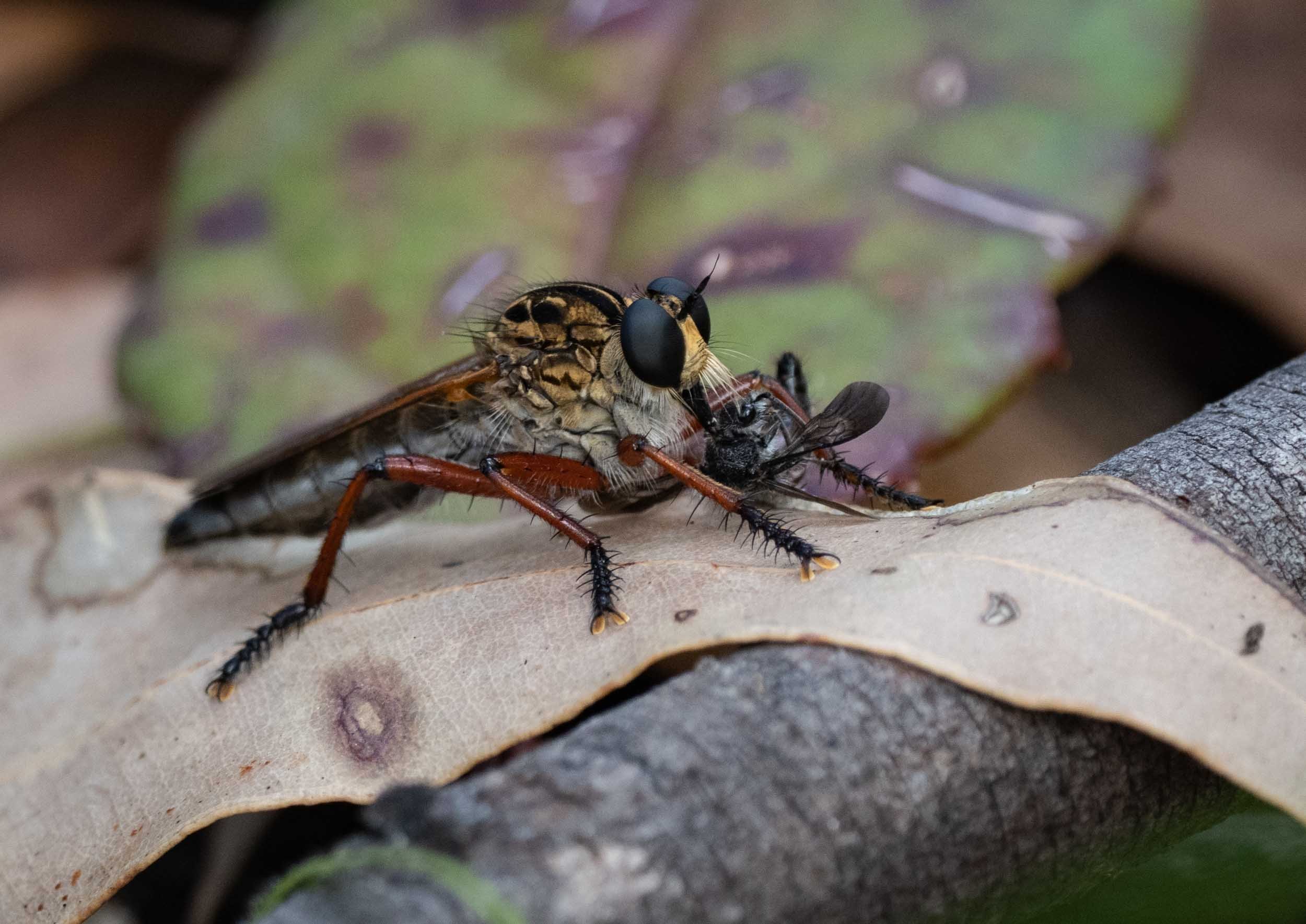
robber fly with velvet ant
I had been watching sand-nesting wasps and the associated patrols by velvet ants (Mutillidae), when this robber fly landed nearby. It appears to have nabbed one of the male velvet ants. That’s impressive, as mutillids are fast flyers.
[at least, I think it’s a mutillid … some flower wasps look quite similar]
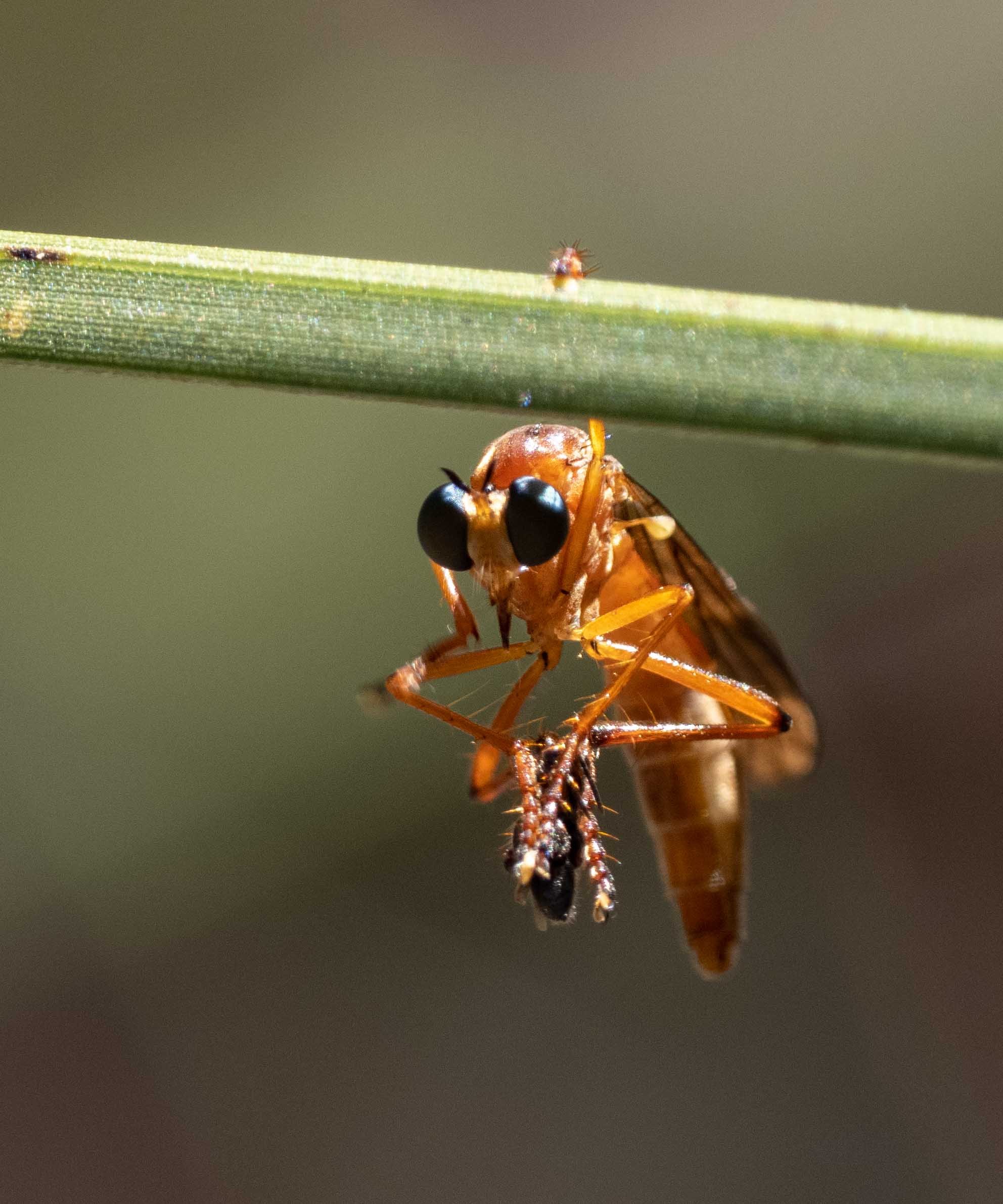
a mystery robber fly
Hanging by one leg while consuming prey is apparently typical behaviour for members of this subfamily. First time I’ve witnessed it, though. And the species identity remains a mystery too (see iNaturalist record).

robber fly with a large meal
Robber flies are among the most commonly photographed insects. They sit motionless, in the sun, often with impaled prey. It takes a while to liquify and ingest the contents of the hapless victim. The saliva of the robber fly contains nerve toxins (to immobilise) and enzymes (to break down proteins).

courtship display
These small, colourful flies slouch at the tips of plants … and dance. The moves involve repeated, alternating leg raises accompanied by wagging of the abdomen. Various members of the family are renown for their courtship display, so I assume that this one is trying to attract a mate.
Brachyrhopala ruficornis

small robber fly, tiny prey
This is one of the smaller robber flies we see, but it is still larger than many. Some species are just a few mm long! As a larva, this species probably prowled beetle burrows in wood.

yet another species of robber fly
Medium in size, yet willing to take tiny prey.
Cerdistus









